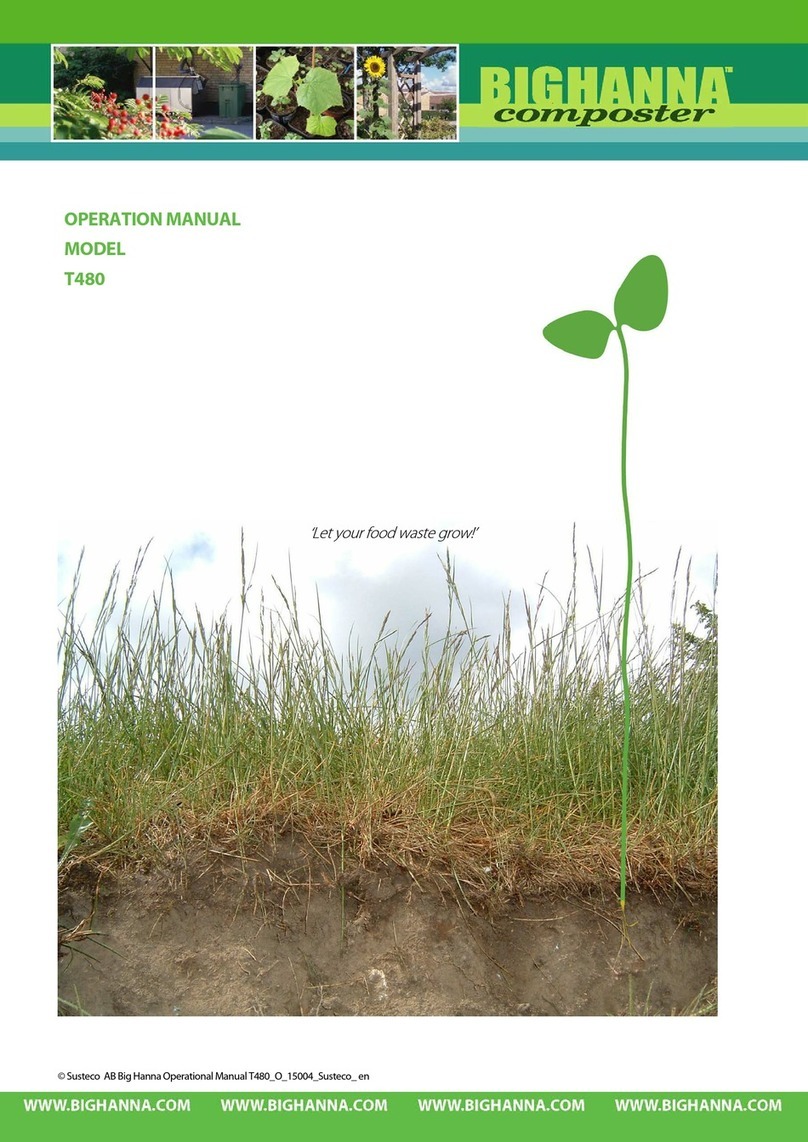
WARRANTY
The Composter is manufactured in stainless steel and all details are chosen with high quality as a
requirement. The proven durability is 20 years provided the machine is cleaned and serviced on a
regular basis. The machines are sold with a 14 months machine warranty (unless a separate
agreement is made).
Susteco AB guarantees to the Customer that the Composter delivered hereunder will be free from
defects in material or workmanship. This warranty shall apply only to defects appearing within 14
months from arrival of the Composter in designated port.
1. Susteco AB’s obligation under this warranty is limited to the repair or replacement of part which is
defective in material or workmanship and declared as such to the distributor and/or Susteco AB
within the warranty period.
2. The defective part shall be returned to Susteco AB if it is deemed feasible to return the part. The
parties shall mutually decide on the appropriate procedure. Defective parts shall be at the disposal
of Susteco AB.
3. The liability of Susteco AB under this warranty, or for any loss or damage to the Composter or any
part thereof, whether the claim is based on contract or negligence, shall not in any case exceed the
cost of replacing defected part of the Composter as herein provided. Upon the expiration of the
warranty period all such liability shall terminate. The foregoing shall constitute the exclusive
remedy of the customer and the exclusive liability of the manufacturer.
4. The Customer must make a claim in writing to Susteco AB or the Distributor that the Composter is
defective within a reasonable time after he/she has noticed or should have noticed the defect.
5. This warranty shall not apply to the Composter if it has been subjected to accident, unauthorised
repair or alterations, misuses, abuse, neglect or improper storage handling or maintenance or as
otherwise set forth in Section 6 below.
6. This warranty does not apply to damages to the Composter (or its components) caused by
a) modification, change or adjustment in any manner whatsoever without the written approval of
Susteco AB;
b) improper operation or installation in accordance with Susteco AB’s instructions;
c) improper repair, inspection, maintenance or service in accordance with Susteco AB’s instructions,
in due time and by skilled personnel duly trained by Susteco AB or by instructors authorised by
Susteco AB; or
d) normal wear and tear or deterioration
7. For parts supplied in replacement of defective parts Susteco AB grants the corresponding warranty
as for the original parts.
In no event, whether as a result of breach of contract or guarantee or alleged negligence or strict
liability, shall the Seller be liable for special, incidental, economic, consequential or personal injury
damages, including but not limited to, loss of profits or revenue, whether achieved or projected,
loss of use of the Composter or any associated equipment, cost of capital, cost of substitute
equipment, facilities or services, downtime costs, or claims of customer of the Customer for such
damage.




























